Employee incentives continue to play a critical role in corporate well-being programs. In fact, nearly 74 percent of employers include employee incentives in their programs, with the average amount per employee reaching $742 in 2017, according to Fidelity.com.
But do you need to spend more on incentives than on your well-being program itself? Thankfully, the answer is no. (Whew.)
However, it does present the opportunity to begin thinking about incentives differently. That’s what Dr. Toni Best, Aduro’s Chief Human Performance Officer, discussed in a recent webinar with Dr. Laura Hamill, Managing Director of the Limeade Institute and Chief People Officer.
Don’t have time to watch the whole webinar? Get our key takeaways in this 5-minute read.
What is Intrinsic Motivation?
In a perfect world, we all love the work we do, and that is enough to inspire greatness. When people are inherently passionate about their work, it’s intrinsically motivating for them to do it.
Dr. Hamill highlighted some of the reasons why someone might find his or her work intrinsically rewarding.
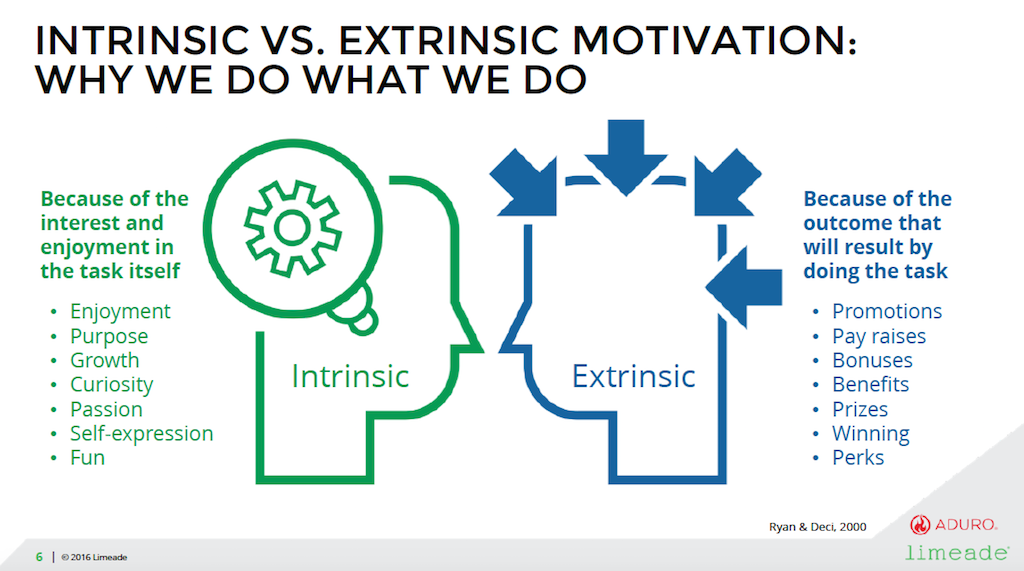
Workplace well-being programs are the perfect example of an initiative that should be intrinsically motivating. Who doesn’t want to be happy, healthy, and free from disease? Yet, as many HR professionals can attest to, that isn’t always reflected in program engagement.
So, where’s the disconnect?
Well-being programs are often geared toward the general population, not customized to the individual. Personalization is the key to participation, Dr. Best explained. In fact, 75 percent of nonparticipants in their company’s well-being program voiced a need to incorporate a more customized approach, according to research by the Harvard Business Review.
The best way to design a well-being program that’s tailored to the individual? “Ask them what they care about to make it meaningful and relevant to them,” Dr. Best said. By allowing people to choose what they want to focus on, employers have the opportunity to help them discover their intrinsic motivation.
Uncovering Our Intrinsic Motivators
Each employee’s intrinsic motivator is as unique as his or her fingerprint — and so is their journey toward discovering it. Aduro calls this moment of self-realization the “Ignite Moment.” It’s the stage of the Transformative Habit Change Model when people realize the reason why they’re motivated to make a positive change.
It might occur when your employees:
- Become aware of their current health standing through a biometric screening.
- Take an online assessment showing their emotional well-being to be below average.
- Answer a question about how fulfilled they feel at work.
- Read an interesting article that elicits new thinking, reveals their underlying values and brings them to the surface.
- Use a device or app to measure steps or sleep and they realize that reality is different than their perception.
Once an individual can break through and understand exactly what they want to accomplish and what drives them from the inside, they can really choose what areas of their life they want to focus on.”
Dr. Toni Best, Chief Human Performance Officer, Aduro
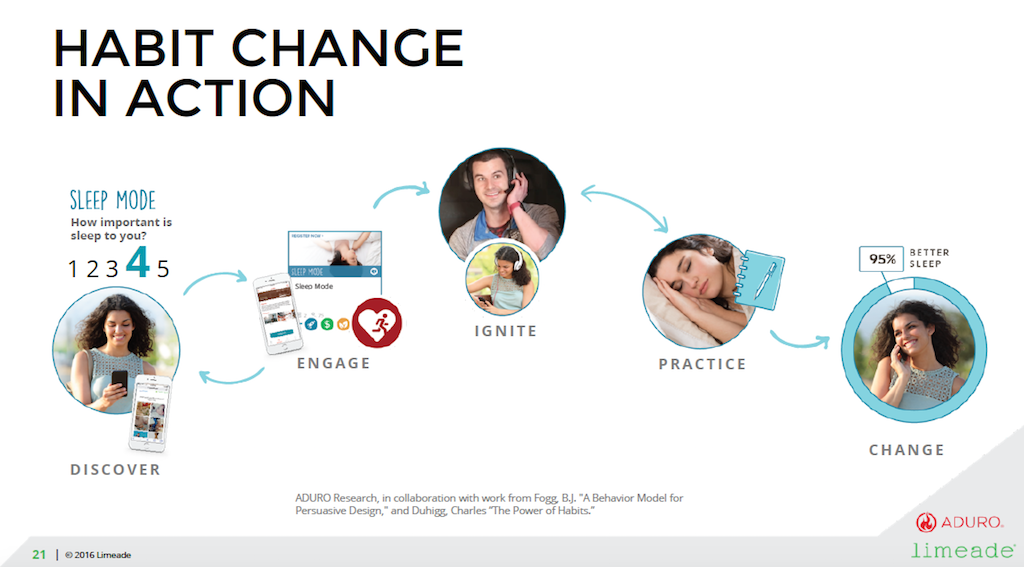
The “Ignite Moment” can be illustrated through “Carmen.” Through an assessment, Carmen sees that her sleep scores are low. She thinks to herself, “I should get more sleep.” Through technology, she’s reminded about the importance of sleep and prompted to join “Sleep Mode,” an online learning path.
Meanwhile, she’s starting to see the impact her lack of sleep is having on her work and home life. Her attention span wanes during an afternoon meeting. At home, she snaps at her fiancé when he asks about dinner. These realizations motivate her to engage with a coach, or “Think Partner,” who talks with Carmen about why sleep is important to her.
She begins to see that her sleep deprivation has negatively impacted the things she values most — her personal relationships and the caliber of her work. Now, she’s ready to act. She begins unplugging from her work email an hour before bedtime, keeping a sleep journal, and reflecting on how getting more sleep has changed the way she feels about herself — and her interactions with others (#winning).
Each of these touch points led Carmen to her “Ignite Moment.” But it was her “Human Moment” — the conversation with her “Think Partner” — that allowed her to go beyond the surface level issue and dig deeper into why better sleep is important to her.

But, as we all know, not all motivation comes from within. Sometimes, it’s an external reward that causes us to take an action.
So, Tell Me About Extrinsic Motivation
Extrinsic motivation is more about the outcome of doing the task versus enjoyment in the task itself. Examples include:
- Promotions
- Pay raises or Bonuses
- Prizes or Perks
- Feeling of Winning
- Fear of Losing
In the traditional wellness industry — and in HR in general — there’s really been a big emphasis on using monetary rewards to get people to participate,” said Dr. Hamill. “We tend to lead with things like incentive designs and skip a lot of the other things that are a little bit more important.”
Dr. Laura Hamill, Managing Director of the Limeade Institute and Chief People Officer, Limeade
However, when you attach a monetary reward to an initiative that should be inherently rewarding, such as taking care of your health, it can backfire, she warned. It can cause an “overjustification effect,” Hamill explained, decreasing someone’s intrinsic motivation to perform a behavior or participate in an activity.
Transitioning to an Intrinsically Motivating Well-being Program
Has your company offered financial incentives since the beginning? If so, then it might seem daunting to tell employees that you’re cutting monetary rewards. There’s a better solution.
First, you don’t have to go from mostly extrinsic to mostly intrinsic motivators. You can use a blend.
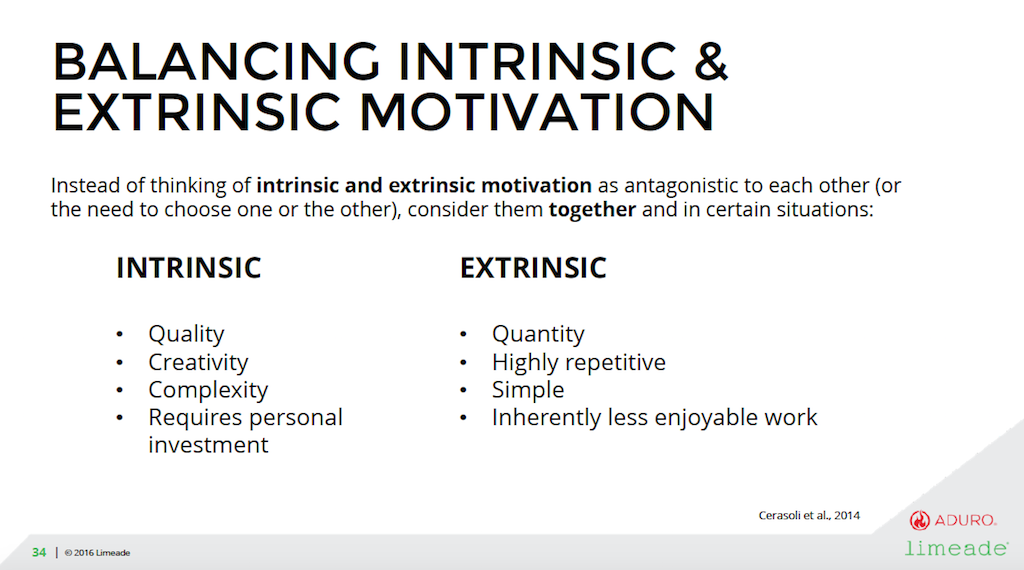
When you’re ready to communicate your new program, Dr. Hamill recommended a step-down approach, explaining why the change is occurring, in a personalized way. Then consider using more inspiring rewards in their place.
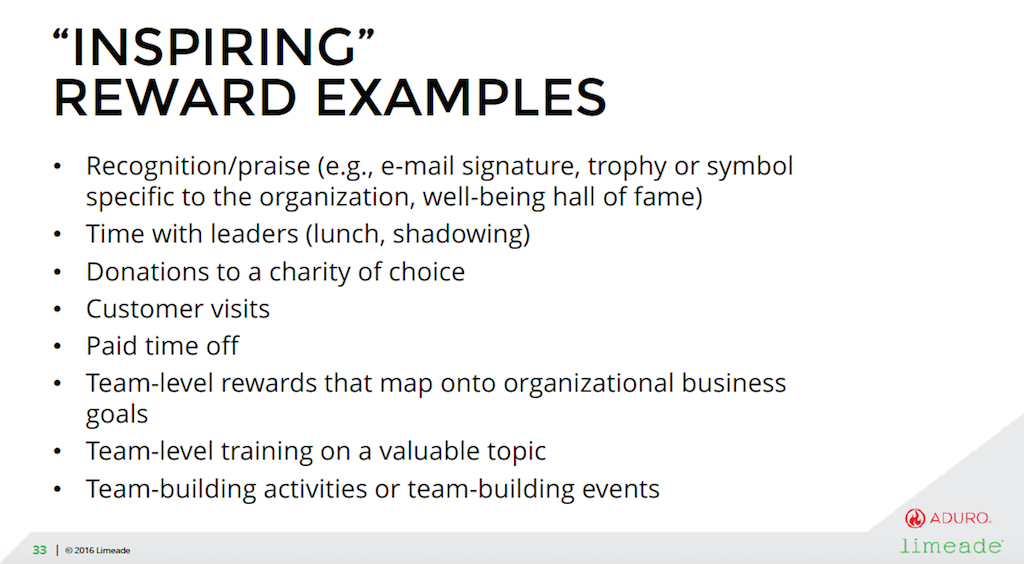
Reaching Your Whole Population
How do you engage an entire workforce population, who all want different things? It’s one of HR’s greatest challenges. The simple answer? Let them choose their own path.
Aduro’s “Roadmap to Success” — the first step in someone’s Human Performance journey — allows participants to choose what they want to focus on four key aspects of their lives. In Aduro’s study of 35,000 participants, you’ll see that more than half of respondents chose to work on something other than health and fitness.
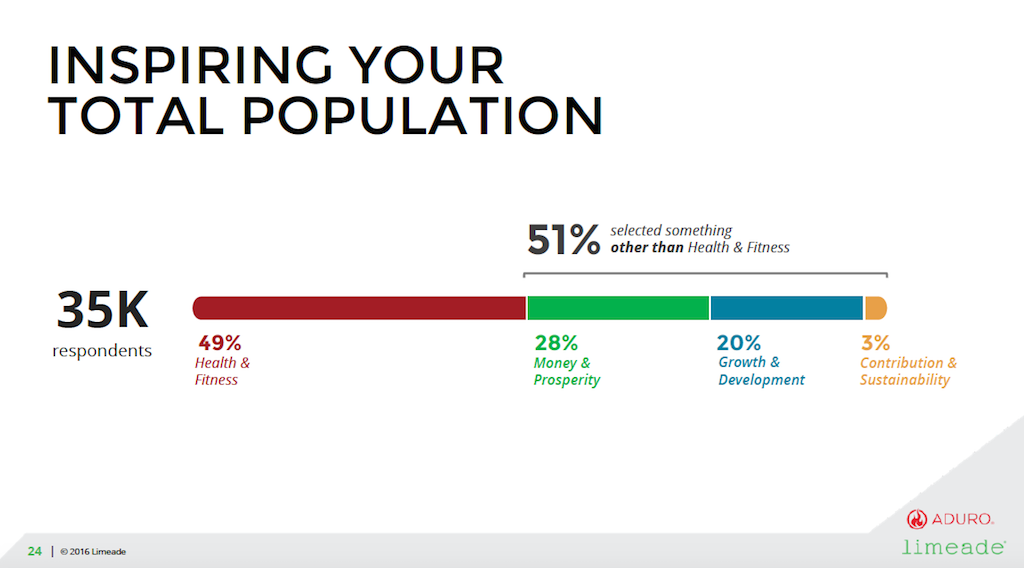
By implementing a holistic approach, you don’t miss out on the other 49% of your population.
From Individual Interests to Organizational Outcomes
Intrinsically motivating programs allow you to engage an entire population by starting with the individual. Let them choose what they want to work on most and they’ll feel more invested in — and rewarded by — achieving that goal. It’s not only more effective for the individual, but it’s also more profitable for the company.
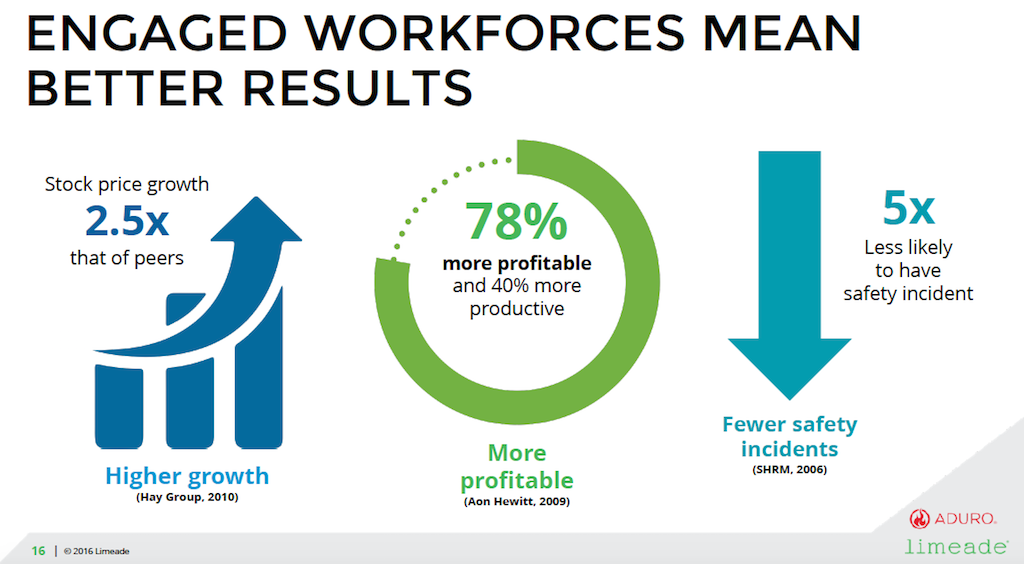
So, by empowering your employees to become happier and healthier on their own terms, your organization wins, too. What greater reward is there than that?
For more webinars, visit our resources page.

